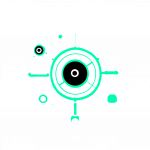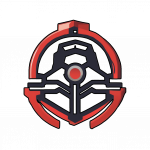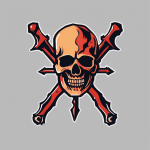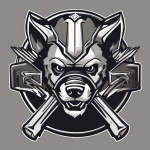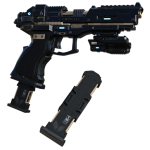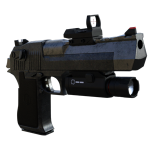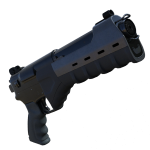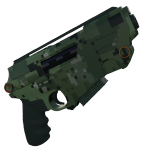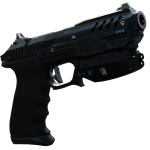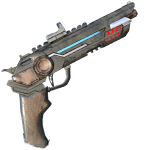The Wastelands
The Northern Hemisphere: A Frozen Wasteland
In the decades following the Corporate Wars, the northern hemisphere of the Earth has undergone a drastic transformation. The once temperate regions are now locked in a perpetual winter, a frozen wasteland where survival is a daily struggle. The causes of this climatic shift are numerous and complex. The widespread use of nuclear weapons during the wars, combined with the unchecked industrial pollution of the previous decades, has wreaked havoc on the global climate. Vast clouds of ash and debris blotted out the sun, triggering a catastrophic drop in temperatures.
As the world froze, the northern landscapes were reshaped. Forests of pine and fir now stretch across vast swathes of what was once temperate woodland and grassland. These forests are dark and foreboding places, the trees often twisted and mutated by the lingering effects of radiation and pollution.
Beyond the forests, great expanses of tundra and permafrost dominate the landscape. Here, the ground is frozen solid, and only the hardiest of plants can survive. Herds of mutated caribou and elk roam these bleak plains, adapted to the harsh conditions. The coastlines of the northern continents are now ringed with towering glaciers and ice shelves. The once bustling ports and coastal cities lie abandoned and frozen, their inhabitants long since fled or perished. Life in the northern wasteland is a constant battle against the elements. Blizzards and ice storms are frequent, and the temperature rarely rises above freezing. For the hardy survivors who call this place home, life revolves around the hunt for scarce resources and the constant fight to stay warm.
Scattered across this frozen hell are the remnants of the old world. Ruined cities, their buildings encased in ice and snow, stand as monuments to the folly of mankind. In some of these ruins, survivors have carved out a meager existence, scavenging for supplies and huddling around precious fires.
One of the most notorious of these frozen cities is Frostholm, once known as Stockholm. Here, in the ruins of the old Swedish capital, a particularly ruthless band of survivors has established a stronghold. These "Frost Raiders" are known for their brutality and their skill at survival in the extreme cold. They range out from Frostholm on raiding parties, preying on the weak and unwary.
For those who brave the frozen wastes, the rewards can be great. The ice preserves many relics of the old world, from advanced technology to stockpiles of valuable resources. But the risks are just as high. The cold is an ever-present killer, and the mutated creatures that roam the wastes are often deadly predators.
In this world of ice and snow, survival is the only law. The strong prey upon the weak, and trust is a luxury few can afford. And yet, even in this bleak and unforgiving landscape, hope persists. For as long as humanity endures, there will always be those who dream of a better tomorrow, no matter how cold the night.
The Mediterranean Jungle
In stark contrast to the frozen north, the Mediterranean Basin has become a lush, overgrown jungle. The once azure waters of the Mediterranean Sea have receded, leaving behind a vast, humid basin filled with dense foliage and teeming with life.
The transformation of the Mediterranean began during the Corporate Wars, as the changing climate and rising sea levels reshaped the coastlines. As the waters receded, they left behind a nutrient-rich seabed, ripe for the explosive growth of plant life.
In the decades that followed, the Mediterranean Jungle has become a verdant paradise, a stark contrast to the desolate wastelands that surround it. Giant trees tower hundreds of feet into the sky, their branches draped with vines and epiphytes. The forest floor is a tangle of undergrowth, a riot of ferns, flowers, and fungi in every color imaginable.
This lush growth is fed by the humid air and the rich soil, a legacy of the Mediterranean's aquatic past. Rainfall is frequent and heavy, and the air is always thick with moisture.
But for all its beauty, the Mediterranean Jungle is also a place of great danger. The dense foliage limits visibility and makes navigation difficult. Venomous snakes and giant insects lurk in the undergrowth, and the trees are home to predatory cats and vicious, mutated apes.
Despite the dangers, the Mediterranean Jungle is home to numerous settlements and communities. These range from small villages of hardy survivors to larger, more organized communities that have managed to carve out a stable existence in the heart of the jungle.
One of the most prominent of these is the city-state of New Carthage, built on the ruins of ancient Carthage on the North African coast. Here, a society has emerged that blends advanced technology with a deep respect for the power of nature. The people of New Carthage live in harmony with the jungle, using its resources sustainably and protecting its secrets.
New Carthage is an exception. Many of the jungle settlements are little more than primitive villages, their inhabitants living a precarious existence at the mercy of the jungle and its predators.
For those who brave the dangers of the jungle, the rewards can be immense. The jungle is a treasure trove of biodiversity, with countless species of plants and animals, many with potential medicinal or scientific value. There are rumors of hidden cities deep in the heart of the jungle, remnants of pre-war civilization that hold untold technological and cultural treasures.
But the jungle does not give up its secrets easily. Many who venture into its depths are never seen again, lost to the green hell that now dominates the heart of the old world. In this place of savage beauty and primal struggle, only the strong and the cunning survive.
The Desolate Cities of Europe
Across the wastelands of Europe, the great cities of the old world lie in ruins. Once the heart of human civilization, these metropolises are now little more than haunted shells, their streets empty and their buildings crumbling.
The causes of this desolation are many. Some cities were targeted directly during the Corporate Wars, subject to devastating aerial bombardments or even tactical nuclear strikes. Others simply collapsed as the old world order crumbled, their populations fleeing or succumbing to disease and starvation.
In the decades since, nature has reclaimed these urban spaces. Grass and trees sprout from the cracks in the pavement, and vines climb the rusting skeletons of skyscrapers. Wildlife, often mutated by the lingering effects of pollution and radiation, has moved in to fill the ecological void left by the absence of humans.
One of the most iconic of these ruined cities is Old Paris. The once-grand boulevards are now choked with rubble and overgrowth, and the famous landmarks are little more than crumbling relics. The Eiffel Tower, once a symbol of human ingenuity and ambition, now stands as a rusting hulk, its metal structure twisted and deformed.
Yet even in its desolation, Old Paris retains a haunting beauty. The play of light through the ruined buildings creates an eerie, almost ethereal atmosphere, and the overgrown gardens and parks have a wild, untamed splendor.
Berlin, once a bustling hub of art and culture, has fared even worse. The city was one of the primary battlegrounds during the Corporate Wars, and the scars of that conflict are still evident. Whole districts are nothing more than rubble, and the remnants of military fortifications and war machines litter the streets. In this post-apocalyptic landscape, danger lurks around every corner. Many of the ruined cities are home to marauding gangs and raiders, who prey on the weak and the unwary. Others are infested with mutated creatures, the product of unchecked biological and chemical weapons.
Even in the midst of this desolation, there are those who still call these ruined cities home. These are the scavengers and the survivors, the hardy few who have managed to eke out an existence in the shadows of the old world. In some cases, small communities have formed in the ruined cities, banding together for mutual protection and support. These enclaves of life amid the ruins are often fiercely independent, wary of outsiders and protective of their scarce resources.
For those who dare to explore these urban wastelands, the potential rewards are immense. The ruins are a treasure trove of pre-war technology and resources, from advanced weapons to medical supplies. But the risks are just as high. In the lawless world of the ruined cities, trust is a rare commodity, and death lurks around every corner. In these desolate urban landscapes, the old world is dead and gone, but life, in all its tenacity and brutality, endures. The ruined cities stand as a testament to the folly of mankind, and a warning of the price of unchecked ambition. Yet they also speak to the indomitable spirit of life itself, ever adapting, ever persisting, even in the face of the most overwhelming odds.
Solaris Agri-Complex
The Solaris Agri-Complex is a vast agricultural facility operated by Zephyr Agritech. The complex consists of acres of hydroponic farms and genetically modified crops, tended to by a workforce of indentured laborers.
Life in Solaris is strictly regimented, with workers living in spartan dormitories and working long hours in the fields and greenhouses. The food produced in Solaris is primarily for export, with only a small portion allocated to feed the workers themselves. Despite the oppressive conditions, many workers in Solaris are grateful for the relative stability and security the complex provides. Outside the walls of the agri-complex, starvation and chaos are constant threats. But this security comes at a high price, with workers having little to no autonomy and facing severe punishments for any infractions or attempts to escape.
Hephaestus Industrial Park
The Hephaestus Industrial Park is a sprawling manufacturing complex operated by Titan Enterprises. The park is home to a variety of heavy industries, from weapons manufacturing to chemical processing.
Workers in Hephaestus live in crowded, polluted tenements, and work long shifts in the dangerous factory conditions. Accidents and industrial diseases are common, and the average life expectancy in Hephaestus is significantly lower than in other wasteland settlements. Titan Enterprises maintains strict control over Hephaestus, with armed security patrols and extensive surveillance systems. Any attempts at unionization or protest are swiftly and brutally suppressed. For the corporate overlords of Titan, Hephaestus is a valuable asset, and any threat to productivity must be eliminated.
New Babylon Entertainment District
New Babylon is a company town operated by Neon Dreams Entertainment, catering to the whims and vices of the wasteland's wealthy elite. The town is a garish neon wonderland, filled with casinos, brothels, and other entertainment venues.
For the workers of New Babylon, life is a constant performance. They are expected to maintain a facade of carefree enjoyment and cater to the every whim of the town's visitors. Behind the scenes, however, conditions are little better than in other company towns. Workers are heavily indebted to Neon Dreams, and are subjected to invasive surveillance and strict behavioral controls.
New Babylon is also known for its gladiatorial arenas, where indentured fighters battle for the entertainment of the crowds. These fights are often to the death, and are a popular draw for the town's visitors. For the fighters, it's a chance at winning their freedom, but the odds are heavily stacked against them.
In these company towns, life is cheap and control is absolute. They stand as a stark reminder of the unchecked power of the corporations in the post-apocalyptic world, and the depths they will sink to in the pursuit of profit and control. Yet even in these bleak environments, the human spirit endures, with workers finding ways to resist, to support each other, and to hold onto their humanity in the face of overwhelming oppression.



